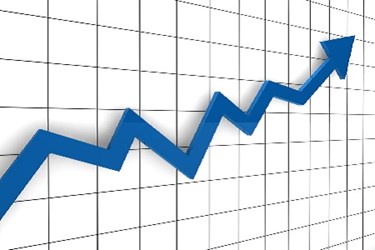Double Digit Growth Is Expected In The Nano-Enabled Packaging Market
By Isaac Fletcher, contributing writer, Food Online

The growing demand for fresh foods and products with extended shelf lives is driving growth in the global market for intelligent packaging.
Due to an increasing demand for shelf-stable packaging, the global market for nano-enabled packaging is growing. According to a report from Persistence Market Research, the market, which was worth $6.5 billion in 2013, is expected to grow at a CAGR of 12.7 percent, reaching a value of $15 billion by 2020. The use of nanomaterials is being explored around the world, and the food and beverage industry is finding many benefits of their use that are being passed on to consumers.
Many technological advancements in recent years have focused on creating safer food products and making life easier for consumers. Nanotechnology is playing an important role in achieving those objectives. For example, nano-enabled packaging offers longer shelf lives for food and beverage products compared to traditional plastic packaging.
The growing demand for fresh fruits and vegetables is acting as a major force driving the growing popularity of intelligent packaging. In many cases, consumers are shifting their dietary preferences away from junk foods in favor of fresh alternatives. Intelligent packaging is helping to make fresh foods more accessible — and identifiable — by consumers. For manufacturers, intelligent packaging is playing an important role in international trade, as food and beverage products are able to arrive at their destination in better conditions.
Nano-enabled packaging for food and beverage products falls under two categories: active packaging and intelligent packaging. While active packaging has a larger market, the market for intelligent packaging is growing at a faster rate. Part of this higher rate of growth can be attributed to the fact that consumers are demonstrating a preference for traceable food and beverage packaging due to its ability to provide information such as expiration date and period of best use. RFID tags are also being used to inform consumers about the state of the food within.
Generally, intelligent packaging is used for fruits, vegetables, meat products, and beverages. However there are viable applications for baked and prepared goods as well. With stricter regulations being placed on the use of active packaging, the intelligent packaging market is being stimulated throughout Europe and North America.
FSMA is also helping the intelligent packaging market expand. The act stipulates that fresh fruits and vegetables are to be scientifically grown, harvested, packaged, and stored. Products that fall under this stipulation are lettuce, spinach, cantaloupe, tomatoes, sprouts, mushrooms, onions, peppers, cabbage, citrus produce, strawberries, and walnuts. Food producers working with these products will likely be exploring the option of intelligent packaging solutions in order to meet new regulatory standards.
